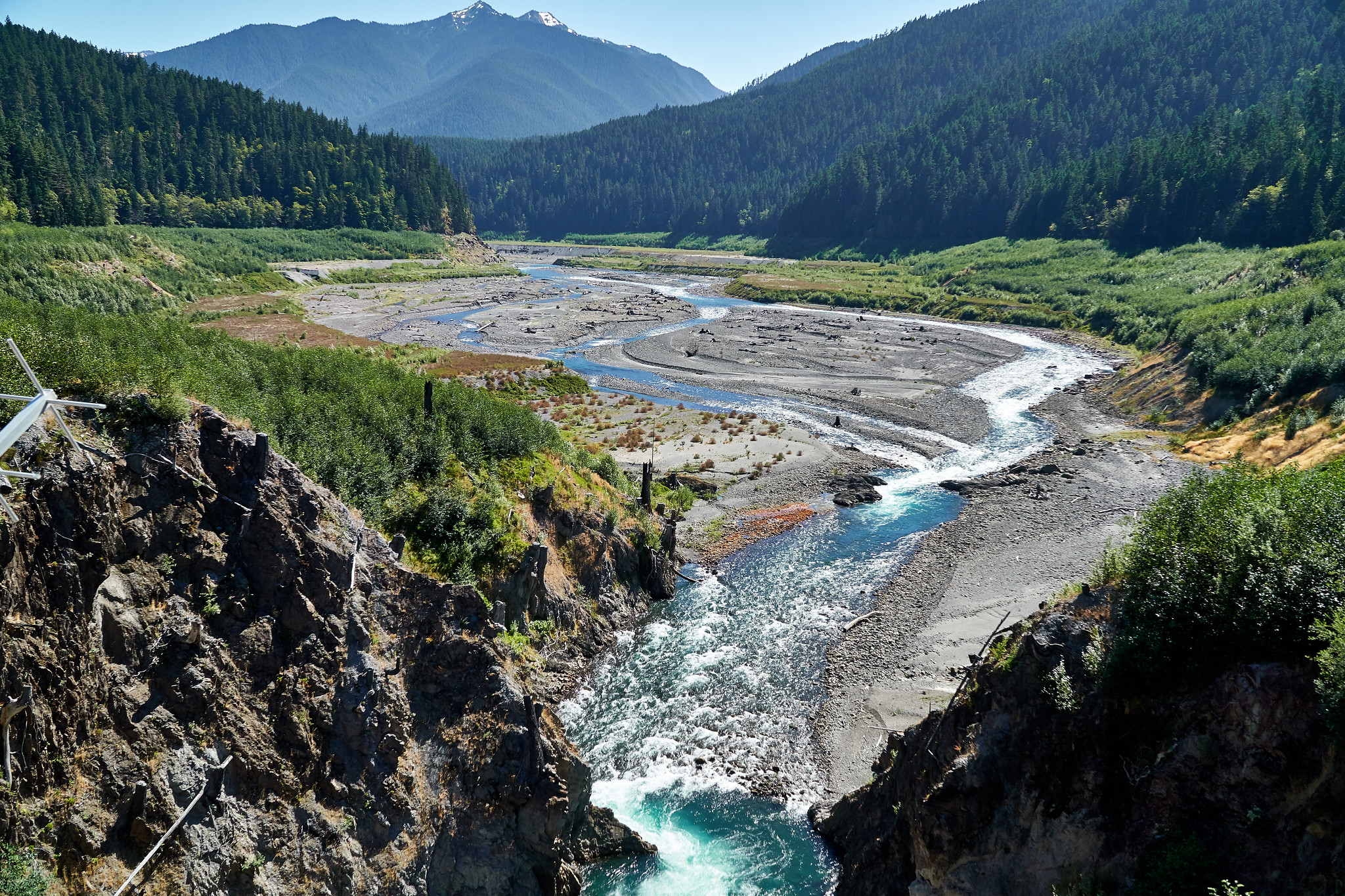Excerpt:
In Washington State, scientists studying the Elwha River Delta in the decade since the dam came down have revealed lasting changes—and a healthier ecosystem.
In late August 2024, Steve Rubin, a fish biologist with the US Geological Survey, will dive into the frigid, briny water of the Juan de Fuca Strait, nearly two kilometers from the mouth of the Elwha River in Washington State. It will be Rubin’s 12th dive at the site since the Elwha Dam was breached in 2011, sending a century’s worth of accumulated sediment surging downstream.
The megatonnes of sediment that were released by the dam’s removal were expected to help rebuild the twists and turns of the Elwha River. But some feared that they might end up suffocating the coastal ecosystems near the delta.
During Rubin’s first postremoval dive, he documented kelp, algae, invertebrates, and fish. The changes he saw were striking: Where there had been dense kelp forests, there was now bare ocean floor. The water was opaque with suspended sediment. At some dive sites near the delta, he could hardly see his outstretched hand. “It’s hard to describe. In some of our sites, there was nothing—literally zero individuals of some of these kelp and algae species,” Rubin says.
The kelp density near the river mouth decreased 77 percent in just a year, a worrisome development that the Seattle Times described as a “kelp Armageddon.” The removal of the Glines Canyon Dam, about 13 kilometers upriver of the Elwha River and 23 kilometers from the delta, started in 2013, releasing even more sediment. Kelp continued to decline that year—decreasing by 95 percent since before dam removal.
That wasn’t the whole story, though. When Rubin returned in 2015, he saw that, at many of his survey sites, the kelp had started to rebound. In 2018, studies revealed that the density of kelp in these sites resembled preremoval levels. Researchers believe the initial die-off was due to suspended sediment blotting out much of the sunlight, which kelp needs to grow. Once that sediment settled or washed away, the kelp recovered.
More than a decade after the Elwha Dam’s removal, researchers are finally getting a more full picture of its impact on coastal ecosystems. When the dams were breached, the coastline near the river’s mouth was completely remodeled. The sediment built stretches of sandy beaches and a series of swirling sandbars that peek above the water’s surface. These beaches and bars have allowed water to pool, forming a series of brackish lagoons. Plants and animals quickly colonized the new ecosystem. “It was like seeing a geologic event in a human time frame,” says Anne Shaffer, executive director and lead scientist of the Coastal Watershed Institute and affiliate professor at Western Washington University…









